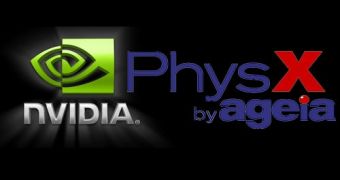The acquisition of the physics processing units manufacturer (PPU) Ageia seems to have been not only an inspired choice, but also extremely easy for the graphics chips expert Nvidia. Nine days after having giving the news to the media, the GPU giant has announced the completion of Ageia buyout.
The PPU market is a niche in the gaming market. The processing engine is a welcome addition to any gaming rig (although it adds up to the final and already bulky price), and offers new technologies to handle the realistic elements in a game. For instance, physics processing takes care of adding dust, flying debris and smoke when throwing a grenade.
The physics engine from Ageia is not so popular, as it is supported by only a few of the latest gaming titles, such as Unreal Tournament 3. However, the complete list of physics-ready games include 140 titles shipping or in development for PCs, Sony Playstation 3, Microsoft Xbox 360, and Nintendo Wii.
"Our strategy is to take the Ageia physics engine, which has been integrated into tools and games all over the world, and we're going to put the Ageia physics engine onto CUDA," Jen-Hsun Huang, Nvidia president and CEO said during yesterday's financial earnings call. "You heard my comments that CUDA has now shipped with 50 million GeForce 8 series processors and over the next several years, we'll ship a few hundred million more. The ability to port the physics engine on top of CUDA and accelerate the physics is going to add a tonne more value to gamers around the world," he continued.
CUDA is a "graphics power-pill" when used in conjunction with Nvidia's GeForce 8800GT GPU, rigged with 112 streaming processors to take care of the hardcore graphics computing.
"Our expectation is that this is going to encourage people to buy even better GPUs. It might and probably will encourage people to buy a second GPU for the SLI slot and for the highest-end gamers, it will encourage them to buy three GPUs, potentially two for graphics and one for physics or one for graphics and two for physics, or any dynamic combination thereof," claimed Huang.
The post-acquisition strategy for Nvidia is extremely simple, and Huang announced that the company has already put its engineers to work in order to port the physics engine to CUDA. "I wouldn't be surprised if this helps our GPU sales even advance, and the reason for that is in the end, it's just going to be a software download, he explained. "Every single GPU that is CUDA enabled will be able to run the physics engine when it comes."

 14 DAY TRIAL //
14 DAY TRIAL //